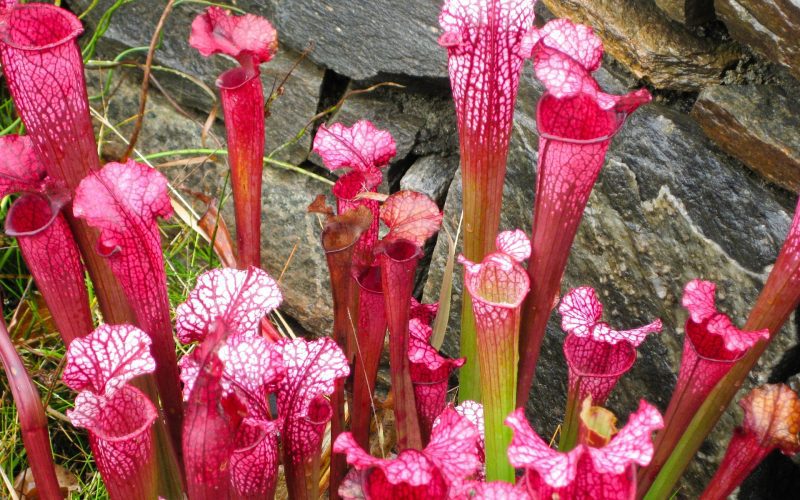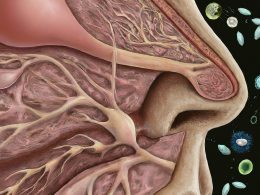When we think of plants, the image that comes to mind is often one of tranquility and peacefulness. However, there are some plants out there that break this mold entirely. Carnivorous plants have evolved to feed off of other organisms, making them a fascinating but also unsettling addition to nature’s beauty. In this blog post, we’ll explore the dark side of these unique and captivating creations, delving into their feeding habits and why they can be dangerous to humans and animals alike. Buckle up as we take a trip down the rabbit hole of carnivorous plant feeding!
Carnivorous plants are beautiful
Carnivorous plants are some of the most visually stunning organisms in the world. They offer a refreshing contrast to the serene and calming characteristics often associated with nature. From their vibrant colors to intricate structures, these fascinating plants have caught the attention of botanists, scientists, and nature enthusiasts alike.
One carnivorous plant that has garnered widespread admiration is the Venus flytrap. The leaves of this plant resemble a clamshell-like structure that opens and closes when triggered by prey. This mechanism is not only intriguing but also beautiful in its own way.
Another remarkable carnivorous plant is Nepenthes Attenboroughii, named after Sir David Attenborough himself! This pitcher plant boasts an exotic appearance with its elongated pitchers filled with digestive enzymes that capture insects for nourishment.
Carnivorous plants may seem unsettling due to their feeding habits; however, there’s no denying their unique beauty. Their striking features highlight yet another facet of nature’s diversity- one we might not initially expect from something so predatory!
Carnivorous plants evolved to feed off of other organisms
Carnivorous plants are fascinating organisms that have evolved to feed off of other living beings, such as insects and small animals. Unlike most plants which rely on photosynthesis for energy, carnivorous plants have adapted to survive in nutrient-poor environments by developing specialized feeding mechanisms.
Some species of carnivorous plants use sticky traps or adhesive surfaces to capture their prey, while others employ pitfall traps or snap traps that close rapidly around the victim. These adaptations allow them to consume nutrients from their prey, including nitrogen and phosphorus, which are essential for growth but often scarce in their habitats.
It’s important to note that despite being natural predators, carnivorous plants do not actively seek out large mammals like humans or pets as prey. In fact, they typically only target small insects and arthropods that can fit within the structure of their trap.
While it may seem unsettling to think about a plant consuming other living beings, it’s important to remember that these adaptations developed over millions of years as a survival mechanism in harsh environments. Additionally, many species of carnivorous plants are now threatened due to habitat loss caused by human activities such as deforestation and land development.
Understanding the evolutionary history behind carnivorous plant feeding habits can help us appreciate these unique organisms and work towards protecting them for future generations.
Carnivorous plants are not natural predators
Carnivorous plants may seem like natural predators, but that’s actually not the case. These plants have evolved to consume other organisms as a way to supplement their nutrient intake in environments where the soil lacks essential nutrients.
Unlike typical predators such as lions or wolves, carnivorous plants do not actively hunt and kill their prey. Instead, they rely on passive traps and digestive enzymes to capture and break down insects and other small animals.
In fact, many species of carnivorous plants are relatively slow-moving and lack any means of physically capturing their prey. They simply lure them into their traps with brightly colored leaves or sweet-smelling nectar.
It’s also worth noting that while carnivorous plant feeding habits may seem gruesome or unsettling to some humans, this is simply a matter of perspective. In nature, all organisms must eat in order to survive – it’s just that for these particular plant species, consuming other creatures is part of their adaptation to challenging growing conditions.
It’s important to understand that although they may appear predatory at first glance, carnivorous plants are simply another fascinating example of how life evolves and adapts in response to its environment.
Carnivorous plants are dangerous to humans and other animals
Carnivorous plants may appear harmless, but they can actually pose a danger to humans and animals. For example, the Venus flytrap has small hairs on its leaves that act as triggers for it to snap shut when an insect lands on them. If a human or animal were to accidentally touch these hairs, the plant could close its trap around their finger or paw.
The pitcher plant is another carnivorous species that can be hazardous. Its deep, slippery cavity filled with digestive enzymes can catch unsuspecting insects and even small rodents. If a curious pet were to stick its head inside the pitcher plant’s cavity, it could become stuck or poisoned by the enzymes.
Some carnivorous plants also produce toxic substances in addition to using traps to capture prey. The sundew plant secretes a sticky substance on its leaves that entraps insects while simultaneously releasing toxins into their bodies.
It’s important for humans and pets alike to avoid handling or ingesting any part of a carnivorous plant without proper knowledge and caution. While fascinating in their unique feeding habits, these botanical predators should not be underestimated when it comes to potential harm they may cause if not respected properly.
Carnivorous plants should not be fed to pets
While carnivorous plants may be fascinating to look at and study, they should never be fed to pets. Many people make the mistake of assuming that since these plants feed on insects and small animals, it must be safe for their furry friends to consume them as well. However, this is far from the truth.
Firstly, many carnivorous plants contain toxic substances within their digestive fluids which can cause harm or even death to animals that ingest them. Secondly, feeding your pet a carnivorous plant could disrupt their natural diet and lead to health issues down the line.
Furthermore, some pets may not know any better than to try and eat anything placed in front of them – including a seemingly harmless Venus flytrap sitting on the windowsill.
It’s important for pet owners to educate themselves about what is safe for their animals to consume before introducing anything new into their diets. When it comes to carnivorous plants, it’s best just to admire them from afar and keep them out of reach of curious paws!
Carnivorous plants can be harmful if not handled properly
Carnivorous plants can be very alluring and intriguing, but it’s important to remember that they are not harmless. In fact, if not handled properly, carnivorous plants can potentially cause harm to humans and animals alike.
One of the main risks associated with handling carnivorous plants is the ingestion of plant fluids or tissues. Some species produce toxins in order to digest their prey. These toxins can be harmful or even deadly if ingested by humans or pets.
Another risk comes from physical injury caused by sharp leaves or spines found on some carnivorous plants such as Venus Flytraps and Pitcher Plants. If mishandled, these plants have the potential to inflict cuts and puncture wounds.
It’s also important to note that many carnivorous plant species require specific growing conditions in order to thrive. For example, some need high humidity levels while others require bright light. Failure to provide suitable growing conditions may result in a weakened plant which could lead to disease infestation or death.
While carnivorous plants can make for fascinating additions to any garden or indoor collection, it’s crucial that they be handled with care and respect for both their unique feeding habits as well as their potential dangers when improperly managed.
Conclusion
The beauty of carnivorous plants can be alluring and fascinating. However, it’s crucial to understand that these plants are not natural predators and evolved to feed off of other organisms as a means of survival in nutrient-poor environments. While they may seem harmless, some carnivorous plant species can pose a threat to humans and pets if not handled properly.
It’s important for people who own or plan on owning carnivorous plants to familiarize themselves with their feeding habits and take necessary precautions when handling them. These plants should never be fed insects from outdoors as they could contain harmful pesticides or diseases.
By taking proper care of our beloved carnivorous plant friends, we can continue to appreciate their unique adaptations without endangering ourselves or others.











